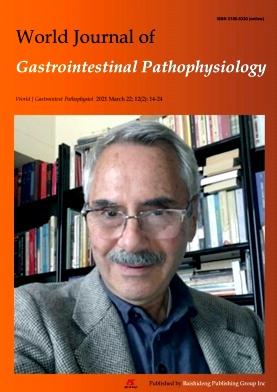Adipose tissue-liver axis in alcoholic liver disease.
引用次数: 23
Abstract
Alcoholic liver disease (ALD) remains an important health problem worldwide. The disease spectrum is featured by early steatosis, steatohepatitis (steatosis with inflammatory cells infiltration and necrosis), with some individuals ultimately progressing to fibrosis/cirrhosis. Although the disease progression is well characterized, no effective therapies are currently available for the treatment in humans. The mechanisms underlying the initiation and progression of ALD are multifactorial and complex. Emerging evidence supports that adipose tissue dysfunction contributes to the pathogenesis of ALD. In the first part of this review, we discuss the mechanisms whereby chronic alcohol exposure contributed to adipose tissue dysfunction, including cell death, inflammation and insulin resistance. It has been long known that aberrant hepatic methionine metabolism is a major metabolic abnormality induced by chronic alcohol exposure and plays an etiological role in the pathogenesis of ALD. The recent studies in our group documented the similar metabolic effect of chronic alcohol drinking on methionine in adipose tissue. In the second part of this review, we also briefly discuss the recent research progress in the field with a focus on how abnormal methionine metabolism in adipose tissue contributes to adipose tissue dysfunction and liver damage.酒精性肝病的脂肪组织-肝轴。
酒精性肝病(ALD)仍然是世界范围内一个重要的健康问题。疾病谱系的特点是早期脂肪变性、脂肪性肝炎(脂肪变性伴炎症细胞浸润和坏死),一些个体最终进展为纤维化/肝硬化。虽然疾病进展有很好的特征,但目前没有有效的治疗方法可用于治疗人类。ALD的发生和发展机制是多因素和复杂的。新出现的证据支持脂肪组织功能障碍有助于ALD的发病机制。在这篇综述的第一部分,我们讨论了慢性酒精暴露导致脂肪组织功能障碍的机制,包括细胞死亡、炎症和胰岛素抵抗。肝脏蛋氨酸代谢异常是慢性酒精暴露引起的主要代谢异常,在ALD的发病机制中起着病因学作用。我们小组最近的研究记录了慢性饮酒对脂肪组织中蛋氨酸的类似代谢作用。第二部分简要介绍了近年来该领域的研究进展,重点介绍了脂肪组织中蛋氨酸代谢异常对脂肪组织功能障碍和肝损害的影响。
本文章由计算机程序翻译,如有差异,请以英文原文为准。
求助全文
约1分钟内获得全文
求助全文

 求助内容:
求助内容: 应助结果提醒方式:
应助结果提醒方式:


